Introduction To
Hip Anatomy for Pain Management
The hip is a large, weight-bearing joint that provides stability, mobility, and support for the body. Understanding the anatomy of the hip can help patients identify the causes of hip pain and explore effective treatment options. This guide outlines the key structures involved in hip function and pain.
- Bones
- Nerves
- Muscles
- Connective tissues
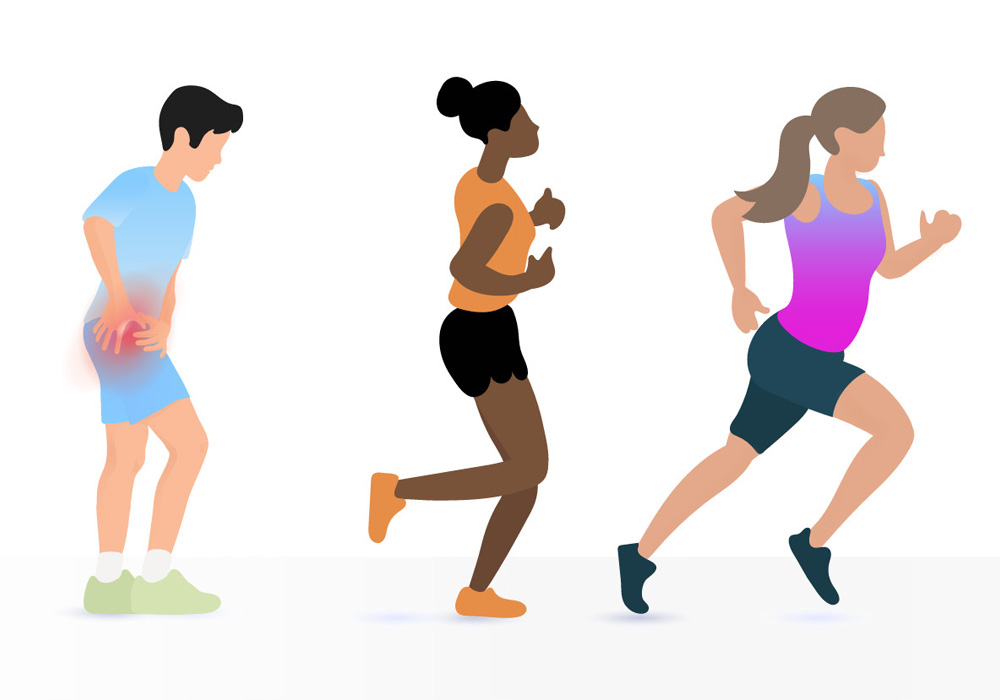
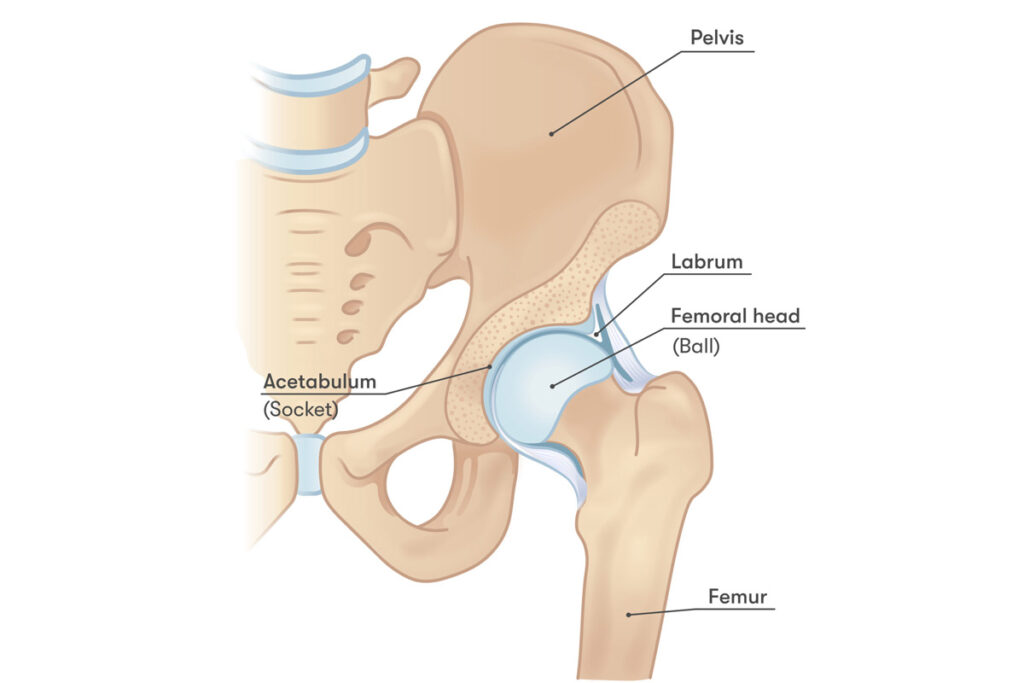
Bones
The hip joint is a ball-and-socket joint formed by two main bones:
- Femur (Thigh Bone): The femoral head is the "ball" that fits into the socket of the pelvis.
- Pelvis: The acetabulum is the "socket" where the femoral head sits. The pelvis also houses the iliac crest, pubis, and ischium, which contribute to the hip’s structure.
The hip’s bony architecture allows for stability while maintaining a wide range of motion.
Nerves
The nerves around the hip are critical for movement and sensation. Key nerves influencing hip function include:
- Sciatic Nerve: Passes through the buttock and down the leg; irritation can cause radiating pain (sciatica).
- Femoral Nerve: Provides sensation to the front of the thigh and helps control hip flexion.
- Obturator Nerve: Supplies the inner thigh muscles and part of the hip joint capsule.
- Superior and Inferior Gluteal Nerves: Control the gluteal muscles, which are key stabilizers of the hip.
Nerve compression, irritation, or injury can contribute to hip pain, weakness, or numbness.
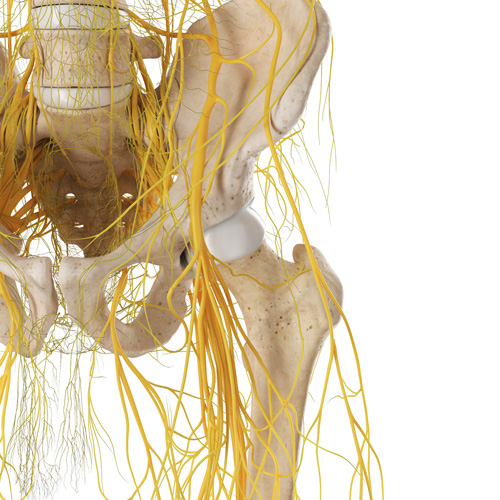
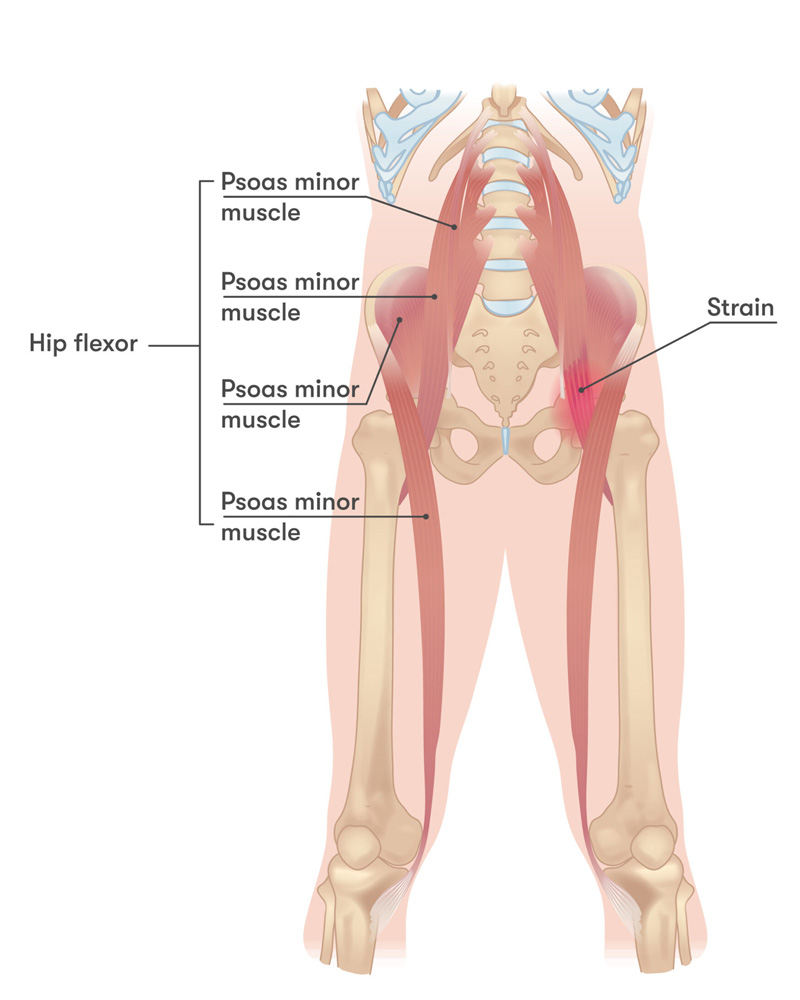
Muscles
The hip relies on multiple muscle groups for movement and stability:
- Gluteal Muscles (Gluteus Maximus, Medius, and Minimus): Provide power for movement and stabilize the pelvis.
- Iliopsoas (Psoas Major and Iliacus): Critical for hip flexion and postural control.
- Adductors: Help move the leg toward the body's centerline and stabilize the hip.
- Hamstrings: Support hip extension and knee flexion.
- Quadriceps: Assist with hip flexion and stabilize the thigh.
Muscle imbalances, tightness, or strains are common contributors to hip pain.
Tissues
Soft tissues in the hip provide cushioning and stability. Important structures include:
- Labrum: A ring of cartilage that deepens the socket and stabilizes the joint. Labral tears are a common source of hip pain.
- Ligaments: Key stabilizing ligaments include the iliofemoral, pubofemoral, and ischiofemoral ligaments.
- Tendons: These connect muscles to bones and can become inflamed, causing conditions like hip flexor tendinitis.
- Bursae: Fluid-filled sacs that reduce friction and cushion the hip joint. Key hip bursae include:
- Trochanteric Bursa: Located on the outer hip, commonly inflamed in greater trochanteric pain syndrome.
- Iliopsoas Bursa: Found near the front of the hip joint; inflammation here can cause deep groin pain.
- Ischial Bursa: Located under the gluteal muscles, inflammation can result in buttock pain.
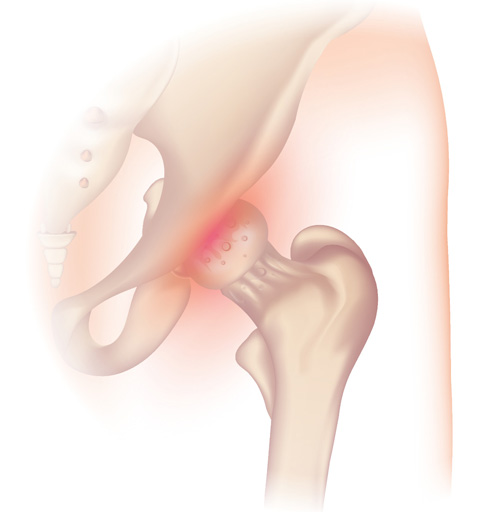
Our Treatment Approach
At Mosaic Pain and Medicine Rehabilitation, we take a multidisciplinary approach to back pain treatment, combining diagnostic expertise, interventional pain procedures, and rehabilitation strategies to provide lasting relief.
-

Comprehensive Lifestyle
Lifestyle Modification Combined with patient tailored cognitive behavioral therapy referral, nutrition, vitamin supplementation
-

Physical and Occupational Therapy
Physical and Occupational Therapy for Functional Improvement
-

Non-Opioid Medication Management
Medications non opioids oral medications
-

Targeted Injections for Pain Relief
Injections; targeting muscle, nerve, bone or sympathetic
-

Neuromodulation Techniques for Pain Management
Neuromodulation; spinal cord stimulation, dorsal root ganglion stimulation, peripheral nerve stimulation
-

Specialist Referrals for Advanced Care
Referral to my colleagues specialized in orthopedic surgery, neurosurgery or neuropsychology.
General Questions
Hip pain can result from arthritis, bursitis, tendonitis, labral tears, hip impingement, muscle strain, or nerve compression due to injury, overuse, or aging-related degeneration.
We offer physical therapy, joint injections (such as corticosteroid and hyaluronic acid injections), radiofrequency ablation, platelet-rich plasma (PRP) therapy, and other non-invasive treatments to reduce pain and improve mobility.
You should seek medical attention if your hip pain persists for more than a few weeks, limits movement, worsens over time, or is accompanied by swelling, stiffness, or difficulty walking.
Yes, many hip conditions can be managed with non-surgical treatments, including physical therapy, medication, injections, and minimally invasive procedures like radiofrequency ablation or nerve stimulation. Surgery is only considered for severe cases.
Share this page:
Facebook
LinkedIn
Twitter
